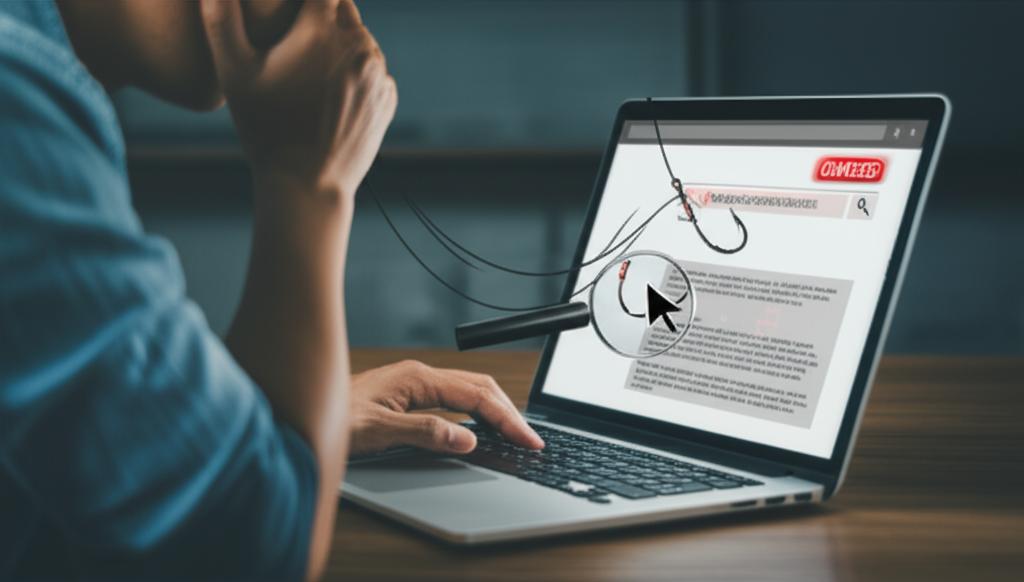Unmasking Deceit: Your Ultimate Guide to Spotting a Phishing Email
In our increasingly digital world, email remains a primary communication channel for both personal and professional interactions. Unfortunately, it’s also a favored hunting ground for cybercriminals using a deceptive tactic known as phishing. Phishing emails are sophisticated scams designed to trick you into revealing sensitive information like passwords, credit card numbers, or other personal data. But fear not! With a keen eye and the right knowledge, you can become a master at spotting these malicious attempts. This comprehensive guide will equip you with the essential skills to identify and avoid phishing emails, safeguarding your digital life.
What Exactly is Phishing?
Phishing is a form of cybercrime where attackers masquerade as a trustworthy entity – like a bank, a well-known company, or even a government agency – to lure victims into divulging sensitive information. These emails often create a sense of urgency, fear, or curiosity, pushing recipients to act without thinking critically.
The Definitive Red Flags: How to Spot a Phishing Email
While phishing tactics constantly evolve, many share common characteristics that, once recognized, become glaring warning signs. Here’s what to look for:
1. Suspicious Sender Address
- Mismatched Domains: Even if the display name looks legitimate (e.g., “Amazon Support”), check the actual email address. Does it come from
amazon-support@notrealdomain.cominstead ofsupport@amazon.com? - Typographical Errors: Attackers often use subtle misspellings in domain names (e.g.,
amzaon.cominstead ofamazon.com). - Unusual Senders: Is the email from a person or department you don’t typically interact with, especially regarding sensitive matters?
2. Generic or Impersonal Greetings
- Legitimate companies usually address you by name (e.g., “Dear [Your Name]”). Phishing emails often use generic greetings like “Dear Customer,” “Dear Account Holder,” or “Valued User.”
3. Urgent or Threatening Language
- Immediate Action Required: Phrases like “Your account will be suspended,” “Urgent security alert,” “Verify your details now to avoid closure,” or “Your package is delayed – click here!” are common tactics to induce panic.
- Threats or Consequences: Warnings of legal action, account termination, or financial penalties if you don’t act immediately.
4. Poor Grammar, Spelling, and Formatting
- While anyone can make a typo, phishing emails, especially from less sophisticated attackers, often contain numerous grammatical errors, awkward phrasing, and inconsistent formatting. Major companies typically have professional communications.
5. Suspicious Links (Hover Before You Click!)
This is perhaps the most critical indicator:
- Mismatched URLs: Hover your mouse cursor over any link without clicking. A small pop-up (usually in the bottom-left corner of your email client) will display the actual URL. If the displayed URL doesn’t match the destination you’d expect (e.g., a link labeled “Bank of America” actually points to
evil-scam.net), it’s a phishing attempt. - Shortened URLs: Be wary of excessively shortened URLs (e.g.,
bit.ly/xxxx) from unexpected senders, as they hide the true destination.
6. Unexpected Attachments
- Unsolicited Files: Never open unexpected attachments, especially if they end in
.exe,.zip,.js, or other executable file types. These often contain malware. - Invoice or Shipping Notices: Be cautious of unsolicited invoices or shipping notifications, especially if you haven’t made any recent purchases.
7. Requests for Personal Information
- Legitimate organizations will rarely (if ever) ask you to provide sensitive information like passwords, credit card numbers, or your Social Security Number via email. If they do, they will direct you to a secure, known portal, not ask you to reply to an email or click a dubious link.
What to Do If You Spot a Phishing Email
- Do NOT Click Any Links or Open Attachments: This is the golden rule.
- Do NOT Reply: Engaging with the sender only confirms your email address is active.
- Report It: Most email clients have a “Report Phishing” or “Junk/Spam” button. You can also forward it to your organization’s IT department or dedicated reporting addresses (e.g.,
reportphishing@apwg.org). - Delete It: Once reported, delete the email from your inbox and trash.
- Change Passwords (If You Clicked): If you accidentally clicked a link and entered any information, immediately change the password for that account and any other accounts using the same password. Enable two-factor authentication (2FA) wherever possible.
Staying Safe: Best Practices
- Use Strong, Unique Passwords: A password manager can help.
- Enable Two-Factor Authentication (2FA/MFA): An extra layer of security.
- Keep Software Updated: Operating systems, browsers, and antivirus software should always be current.
- Be Skeptical: If an offer seems too good to be true, it probably is.
- Verify Directly: If you’re unsure about an email, contact the supposed sender directly using their official website or a known phone number (not one provided in the suspicious email).
Conclusion
Phishing emails are a constant threat, but with diligence and a critical mindset, you can effectively defend yourself. By understanding the common tactics and knowing what to look for, you transform from a potential victim into a formidable line of defense against cyber deceit. Stay vigilant, stay secure!







